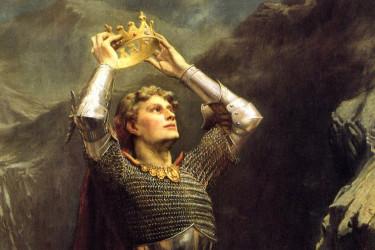
Hit play below to listen to our Arts Alive feature on Paul Wittgenstein.
Paul Wittgenstein was a young Austrian soldier fighting in World War One when a bullet struck his elbow. That injury led not only to a profound change in the life of the young concert pianist, but also to the creation of many works written specifically for him, by some of the greatest composers of the day. Here’s a look at some of those works of art that aren’t heard as frequently as the concerto that Maurice Ravel wrote for him.
Wittgenstein was from a well-to-do family (his brother was the philosopher Ludwig Wittgenstein) and had received good reviews when he had his debut recital in 1913. But early in the first World War the next year, his injuries led to the amputation of his right arm. While there were pieces written only for the left hand, they were few, and mostly served as etudes to strengthen what for many people is the non-dominant hand. When Wittgenstein determined he wouldn’t give up his career as a pianist, he decided to commission the repertoire that he would play. There were many who he approached, including Franz Schmidt, an Austrian composer who is not well known today, who wrote this concerto (the piano comes in after a 3:00 introduction):
Another Austrian composer was Erich Wolfgang Korngold, a bit of a wunderkind already, having written several successful operas by the time he was in his mid-20s. Later, as World War II approached, he would emigrate to the United States to become a composer of some of the great Hollywood films.
Wittgenstein and Ravel had a falling out over the changes he wanted to make (and did) in early performances, but he eventually came around to playing it as written.
There were at least two of the works written for him that Wittgenstein didn’t play. He shelved the concerto by Paul Hindemith (it was found after the death of his wife among her papers) and said he didn’t understand Sergei Prokofiev’s Fourth Piano Concerto well enough to play it.







